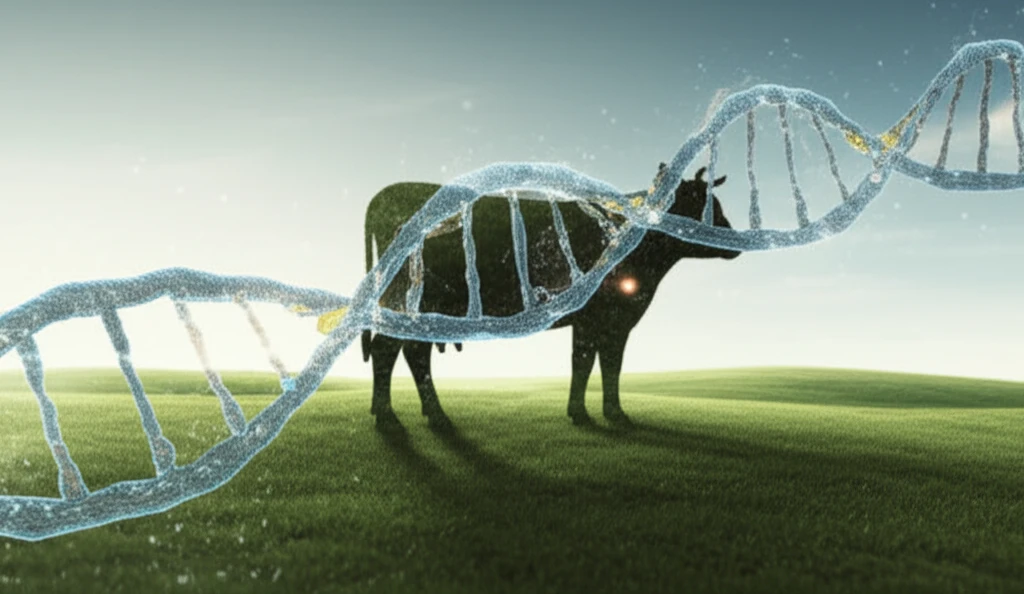
Decoding Dairy: How Genetics Can Improve Your Milk
"Unlocking the secrets of Turkish cattle breeds through genetic analysis to enhance milk production and quality."
For centuries, dairy farming has been a cornerstone of agriculture, with milk serving as a vital source of nutrition. But what if we could enhance milk production and quality through a deeper understanding of cattle genetics? Recent research is doing just that, exploring how specific genes influence milk yield and composition, paving the way for more efficient and sustainable dairy practices.
At the heart of this genetic exploration are genes like growth hormone (GH), prolactin (PRL), and diacylglycerol acyltransferase (DGAT1). These genes play crucial roles in various biological processes, and variations within them (known as polymorphisms) can significantly impact milk production traits. By identifying and understanding these genetic variations, breeders can make informed decisions to improve their herds.
This article delves into a study focusing on the genetic diversity of four native Turkish cattle breeds, examining the polymorphisms in the GH, PRL, and DGAT1 genes. We'll explore how this research contributes to our understanding of cattle genetics, potentially leading to advancements in dairy farming practices not only in Turkey but around the world.
The Genetic Blueprint: Understanding GH, PRL, and DGAT1

The study employed a technique called PCR-RFLP (Polymerase Chain Reaction-Restriction Fragment Length Polymorphism) to analyze specific DNA fragments of the GH, PRL, and DGAT1 genes. This method allows researchers to identify different versions (alleles) of these genes within the cattle population. Specific enzymes are used to cut the DNA at specific points, revealing different band patterns that correspond to different genetic variations.
- Growth Hormone (GH): Located on chromosome 19, GH influences growth and metabolism. Specific variations in the GH gene have been linked to milk and meat yield. The study looked at two variations (GH-MspI and GH-AluI).
- Prolactin (PRL): Found on chromosome 23, PRL is vital for milk production. Variations in the PRL gene are known to affect milk yield, fat content, and protein content. The study investigated the PRL-RsaI variation.
- Diacylglycerol Acyltransferase (DGAT1): Situated on chromosome 14, DGAT1 is related to milk fat content. A specific variation (K232A) in the DGAT1 gene has a major effect on milk composition, where one variant (K) is associated with high fat content, and another (A) with higher milk yield.
Implications for the Future of Dairy Farming
This research provides valuable insights into the genetic makeup of Turkish cattle breeds, adding to the global understanding of cattle genetics. By identifying the allele frequencies of key genes related to milk production, breeders can make more informed decisions when selecting animals for breeding programs.
For example, if the goal is to increase milk fat content, breeders might select for animals with a higher frequency of the GH-MspI (-) and GH-AluI (V) alleles, which have been linked to higher fat content in previous studies. Conversely, to increase milk yield, selecting for the GH-MspI (+) and PRL (A) alleles could be beneficial.
While this study focused on Turkish cattle breeds, the principles and methods used can be applied to other breeds around the world. Understanding the genetic factors that influence milk production is crucial for developing sustainable and efficient dairy farming practices that meet the growing global demand for milk and dairy products.
